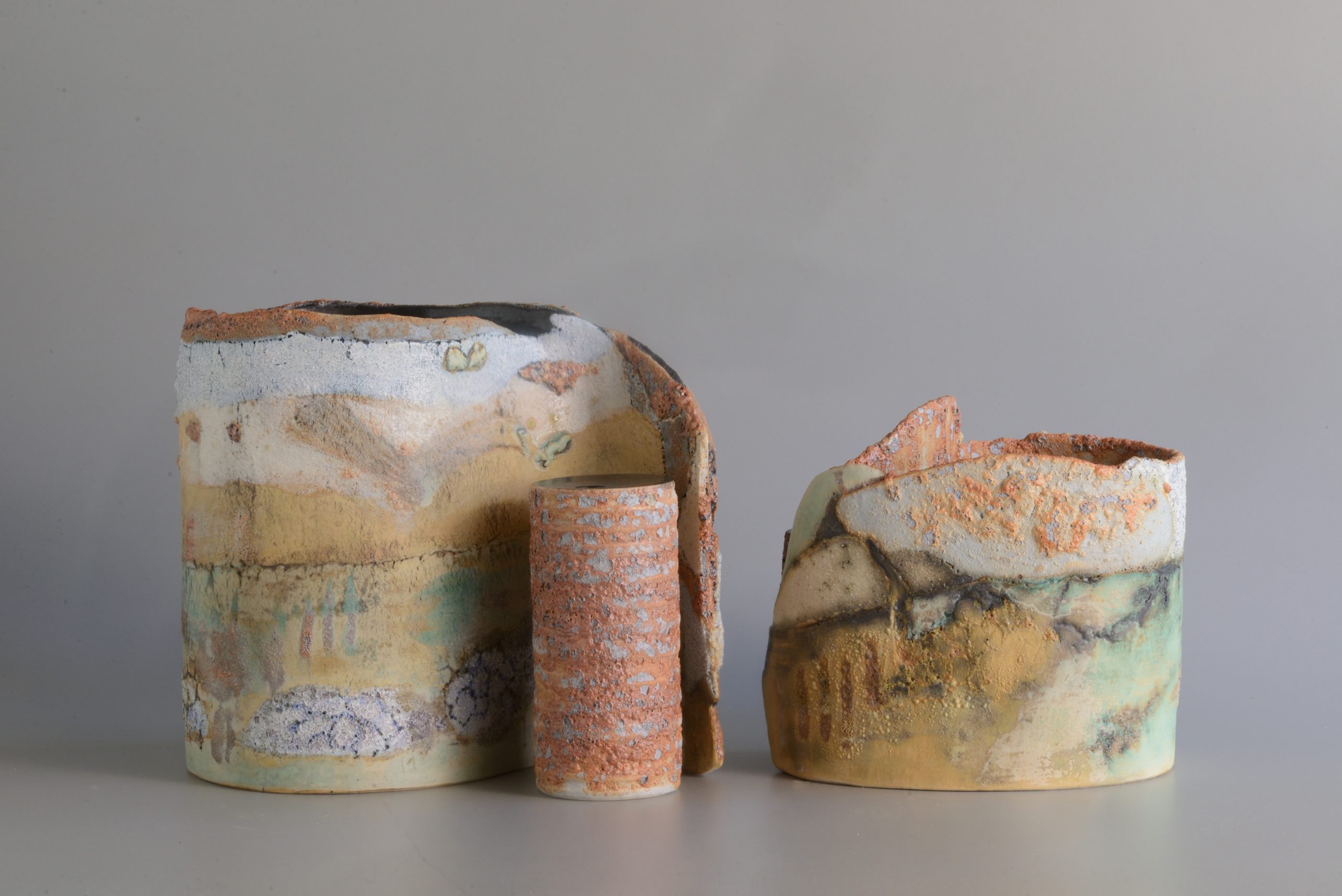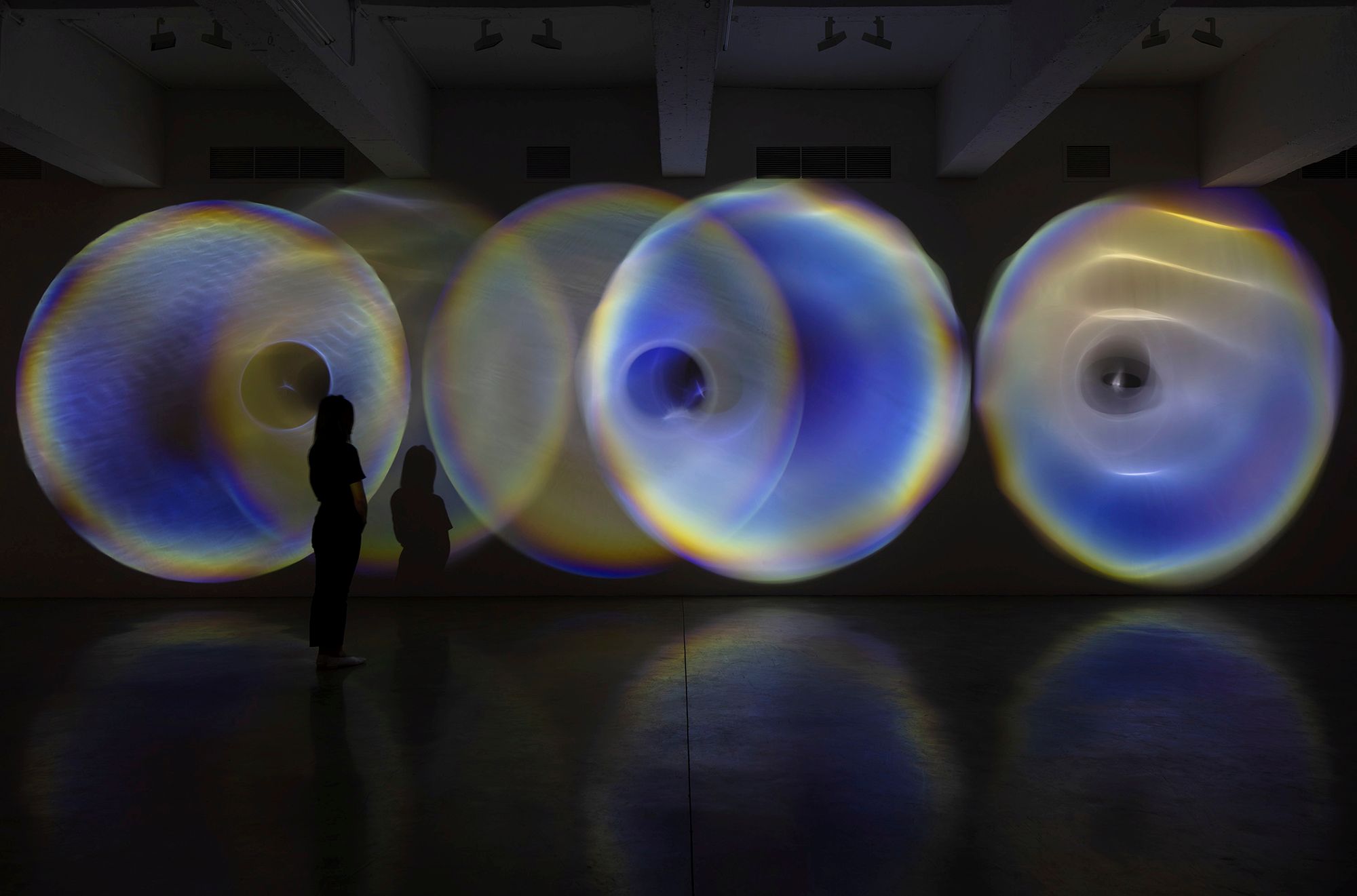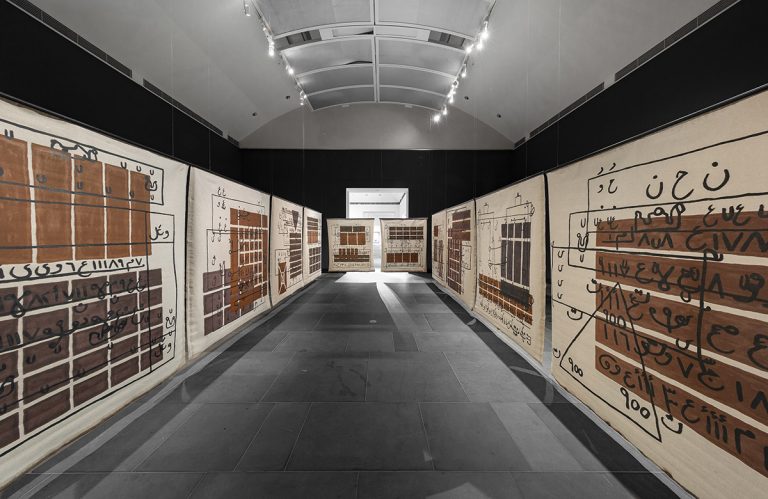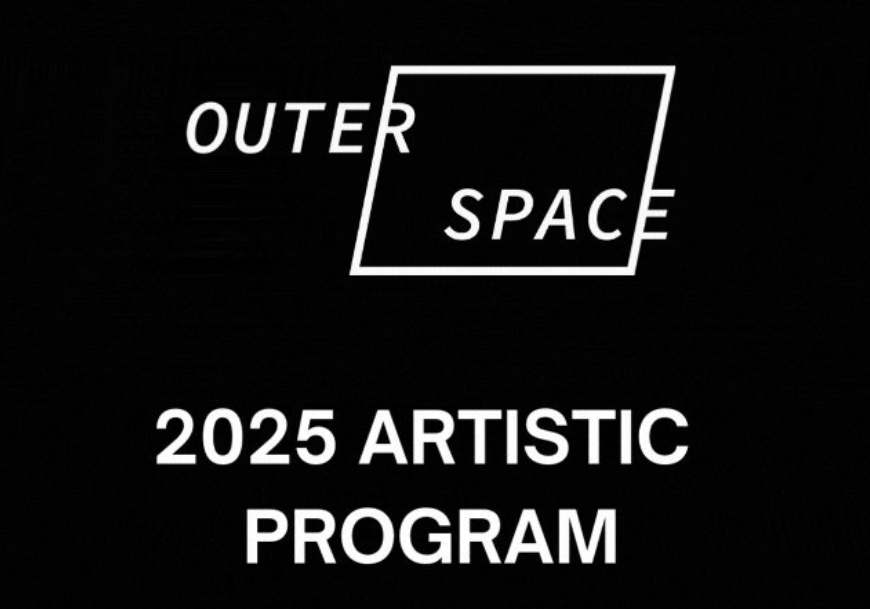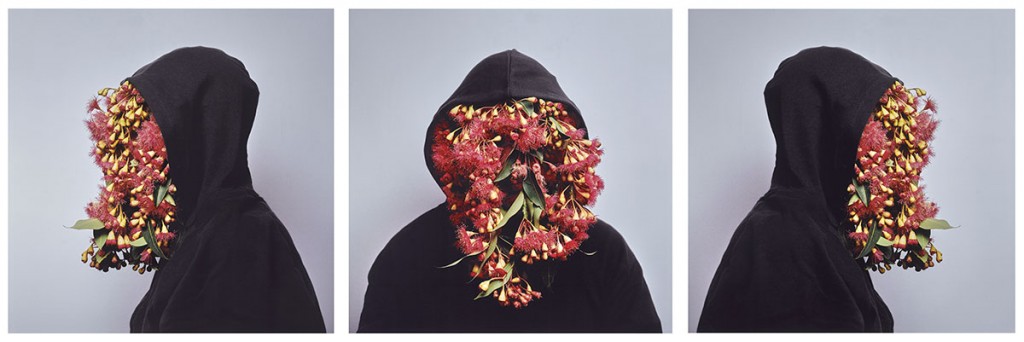
You may be most familiar with Christian Thompson’s 2008 works Black Gum 1, 2 and 3 a series which has often been on display at GOMA over the past few years. The works feature 3 photographs akin to mugshots of a person in a black hoodie with red and gold gum blossoms spilling out of the face. It’s arresting for it’s simplicity and ability to encompass so many issues with just a few symbols.
As a Bidjara man, Thompson’s work references the history of Indigenous peoples in Australia. Thompson was notably only the second Aboriginal Australian person to be admitted to study at Oxford where he completed his PhD in 2016. The black hoodie is a powerful symbol of black youth culture, the raised hood of disengagement and hopelessness. In contrast the escaping gum blossoms are unexpected and beautiful. Native to Australia , they suggest the bounty of Aboriginal cultures often overlooked.
The three large-format photographs provide the perfect entrance to Thompson’s first survey show currently on display at the Queensland College of Art at Griffith University in Southbank. The presented works include photography, video and, oddly, a sculpture. As a single object, it feels somewhat out of place but continues the slick aesthetic of the photographs.
With prominent cheek-bones and a Vogue pout, many of Thompson’s works resemble high fashion photo-shoots. The allusion to contemporary Instagram selfie culture is difficult to escape. Thompson creates characters, sublime and ghostly that feature in the studio portraits. However, as Thompson himself describes, “While I’m interested in portraiture – I don’t consider my work as portraiture because that suggests that I’m trying to portray myself, my own visage, my own image. I employ images, icons, materials, metaphors to capture and idea and moment in time. There are many different things at play; taking a picture of myself is really the last thing that’s on my mind.” in conversation with curator Hetti Perkins in the exhibition catalogue.
This aesthetic is used to particularly good effect in Refugee (2015), where Thompson’s intense stare and closeups add to the mysterious allure of the Bidjara language. Thompson also uses the documentary function of video and photography to access meaning through archiving. By recording the song, Thompson ensures the ongoing life of the endangered language, at odds with the intention of many of the archives of Aboriginal people he encountered in Oxford.
In some cases the works can be a little frustrating because despite a similar studio portrait format, they don’t have the restrained genius of Black Gum. Instead however, this seems like a purposeful direction towards commenting on specific issues. For example Thompsons’ Untitled #6 (2010) features a garish green character with purple flowers for eyes and Chinese-printed Aboriginal-designed colourful suit holding a bunch of white lillies. The character is jarring and nightmarish but uses this to comment on the disjointed influences of the artist.
While this exhibition feels like it is missing works that would have presented a more complete story, it’s an interesting look at a very experimental practice working with mediums that seek to draw the viewer into their world rather than continuing that of the outside. The intimacy of large works featuring ritual repetition perfectly reflect the title and are worth a look.
Written by Rosie Goldfeder
Christian Thompson: Ritual Intimacy is on display at the Griffith University Art Gallery until 23 September, 2017.
Image: Christian Thompson – Black Gum 1, 2 and 3 (2008). Photograph.

